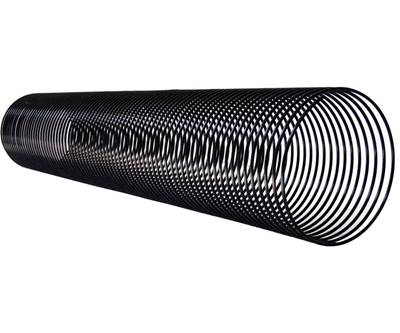2019 SPE Automotive Innovation Awards winners announced
Among the winners and finalists, a wide range of technologies demonstrate composites’ benefits for ground transportation.
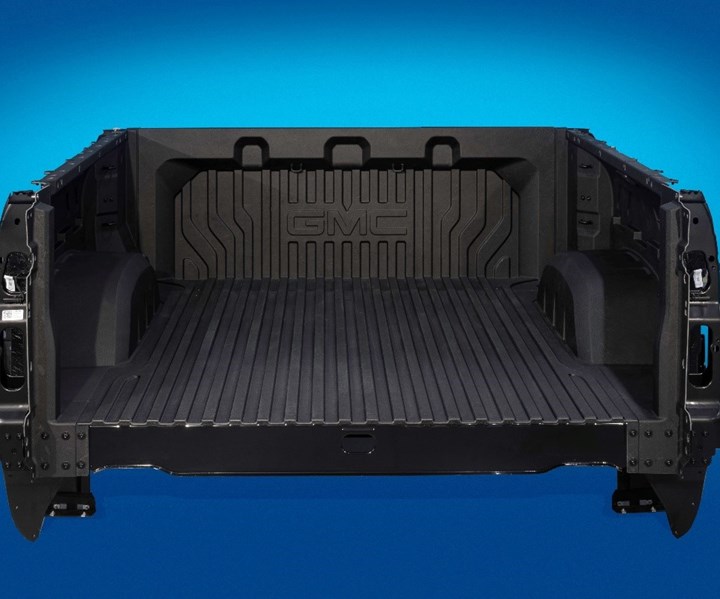
The CarbonPro box, the industry’s first thermoplastic composite pickup box compression molded in Sereebo carbon fiber/polyamide 6 composite from Teijin Ltd., took home the Grand Award at this year’s SPE Automotive Innovation Awards Competition. Source | SPE Automotive Division

For 49 years, the SPE Automotive Division has held its annual Automotive Innovation Awards Competition and Gala, which the group says is the oldest and largest event of its kind in the automotive and plastics industries. Pictured, Rose Petrella-Lovasik, product development engineer at Ford Motor Co., gets ready to announce the chassis/hardware category winner at last year’s event. Source | SPE Automotive Division
The Automotive Division of the Society of Plastics Engineers (SPE, Bethel, Conn., U.S.) recently concluded two rounds of judging on its 49th annual Automotive Innovation Awards Competition. On Nov. 6, the group held its 49th annual Automotive Innovation Awards Gala in the Detroit suburbs, where its members handed out trophies to finalists, category winners and the Grand Award winner, which were selected after prequalification and two rounds of judging by industry experts and members of the media.
This year, winning nominations and their development teams were honored by SPE in the categories of additive manufacturing, aftermarket and limited-edition/specialty vehicles, body exterior, body interior, chassis/hardware, environmental, materials, powertrain and process/assembly/enabling technologies. Additionally, SPE gave out awards to its Hall of Fame, Lifetime Achievement and Vehicle Engineering Team Award winners.
2019 Finalist, Category and Grand Award Winners
Note: a † denotes that the entry is a composite part.
New and noteworthy composites entries
While not every composite part entered in the competition always survives to win its category or the Grand Award, many of these nominations are remarkable for the way materials science, process development and engineering innovation were combined to create a new part that either did something previously impossible in alternative materials or that greatly improved on the functionality, mass, packageability and cost of similar parts in benchmark materials — usually metals. This year’s competition featured a significantly larger than usual number of composite entries and the wide range of different composite materials and process technologies they represented.

Among the largest parts in this year’s competition (163 by 175 by 61 centimeters) was the compression molded SMC rear surround frame, which forms the dimensional foundation for all rear exterior and interior panels on the 2020MY Chevrolet Corvette sports car, providing the flexibility to build multiple model variants off a single design. Source | SPE Automotive Division
For example, General Motors nominated nine parts in five categories — all of them innovative and composite, and all from the 2020MY Corvette. The technologies included a beryllium-graphite filled sheet molding compound (SMC) with a vinyl ester matrix that was formulated and molded by Molded Fiber Glass Companies (MFG, Ashtabula, Ohio, U.S.) for the vehicle’s rear bulkhead window frame to not only survive heat right over the mid-mounted engine, but also to deaden sound.
MFG also formulated and compression molded a 1.2 specific gravity (SG) toughened SMC with both carbon and glass fiber reinforcement in an unsaturated polyester/vinyl ester (UP/VE) matrix for the rear surround frame. Both front and rear storage trunks on the Corvette sport low-density (0.9 SG) SMC (in fiberglass-reinforced UP/VE matrix) from MFG. The material floats on water, permits tall walls with deep-draw sides to be molded without issue, and saved both cost and 4.5 kilograms of mass. A slightly heavier (0.95 SG) toughened UP/VE SMC was formulated by MFG for rear induction ducts that eliminated the need for resonators and are said to be the first such ducts to be integral to the body frame.
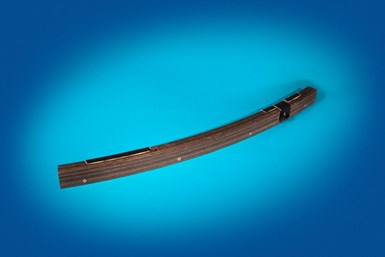
The auto industry’s first curved pultruded bumper beam on 2020MY Chevrolet Corvettes was produced by Shape Corp. using the radius-pultrusion process and equipment developed by Thomas GmbH + Co. Technik + Innovation KG. (Bremervörde, Germany) Source | SPE Automotive
The radius-pultrusion process was used to produce the auto industry’s first curved pultruded composite bumper beam for the rear of the Corvette. Shape Corp. (Grand Haven, Mich., U.S.) produced the parts using a carbon fiber-reinforced polyurethane-acrylate matrix. The curved beam better matches rear styling and package space and is assembled to the body-in-white.
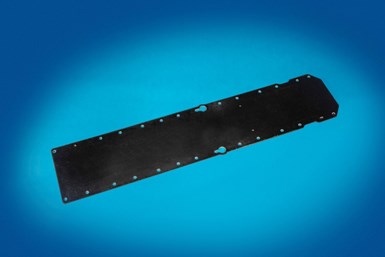
This underbody tunnel closeout was produced via liquid compression molding (LCM) using both carbon fiber (two layers) and glass fiber (three layers) impregnated with a vinyl ester matrix. Source | SPE Automotive Division
A liquid compression molded (LCM) composite underbody tunnel closeout contributes 10% or more to the vehicle’s torsional rigidity in this tunnel-dominated architecture. Normally composites are used to reduce mass but in the case of the precision wheel-balance system used on the Corvette, a unique high-density (5.8 SG) composite featuring extruded fluoropolymer reinforced with post-industrial, corrosion-resistant steel alloy with tailored magnetic properties is used. Reportedly, the continuous tape-based wheel weights can be dispensed in smaller increments of weight, improving ride and reducing tire wear, halving assembly time, lowering costs, and replacing metallic wheel weights in steel, zinc, and lead.
The Corvette wasn’t the only composite-intensive GM vehicle in the competition. The automaker also nominated its CarbonPro carbon fiber-reinforced thermoplastic composite pickup box on the 2019MY GMC Sierra Denali and AT4 pickups. Continental Structural Plastics, a Teijin co. (Auburn Hills, Mich., U.S.) was the molder and tier integrator.

One of the more unusual materials in this year’s competition was a glass wool/polypropylene composite formulated to improve scratch and mar on door panel inners. The application also gives new life to old fiberglass insulation, which is notoriously hard to recycle and gums up incinerators when parts are burned. Source | SPE Automotive Division
Hyundai Motor Co. (Seoul, Korea) has established a reputation of developing innovative and unusual polymeric materials to solve tricky engineering problems. This year the company was back with polypropylene (PP) door panels on 2017MY Hyundai Elantra sedans that were reinforced with glass wool. The filler, which involves recovering fiberglass insulation from the construction industry and grinding it with sand, is said to improve long-term scratch resistance and dimensional stability, while reducing mass and cost. Seoyon E-Wha (Seoul, Korea) was molder/tier integrator and toolmaker.
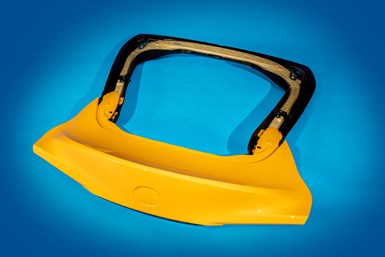
Aerospace technology in the form of filament winding was used to produce the inner reinforcing structure on a sports car liftgate. The technology was not only fast enough to meet automotive production volumes but also was said to be ideal for difficult packaging and load cases. Source | SPE Automotive Division
A unique composite liftgate inner reinforcement structure on 2020MY Toyota Supra sports cars by Toyota Motor Corp. (Toyota, Japan) replaced steel at lower mass and coefficient of linear thermal expansion (CLTE) but higher stiffness/weight ratios and dimensional stability. It is produced by Magna International Inc. (Aurora, Ont., Canada) in filament wound polyurethane (PUR)/fiberglass composite (with PUR cores and skins).
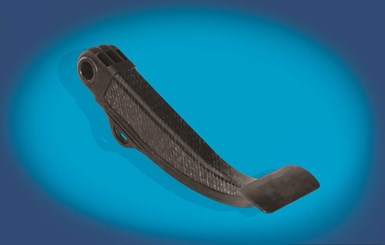
A high-volume thermoplastic composite brake pedal was produced in Germany using a hybrid layup and molding process on bespoke equipment. Source | Boge Rubber & Plastics and SPE Automotive Division
An innovative composite brake pedal on 2020MY Porsche 911 sports cars and Taycan electric vehicles from Volkswagen AG (Wolfsburg, Germany) also was nominated. Produced by Boge Rubber & Plastics (Damme, Germany) using unidirectional thermoplastic tapes, long-fiber thermoplastic (LFT), and fiberglass fabric-reinforced organosheet — all with a polyamide 6 (PA6) matrix. By replacing LFT/organosheet with the tape/LFT/organosheet combination, mass was reduced, driving haptics were improved and cost was neutral or lower, depending on model.

An injection molded glass/PA 6/6 bracket on the rear differential module replaced aluminum at lower mass and cost and better NVH. The tough composite had to meet stringent requirements and provide seamless integration into then-current production. Source | SPE Automotive Division
Another innovative Boge part nominated on 2020MY Jeep Cherokee sport-utility vehicles (SUVs) by FCA NA LLC (Auburn Hills, Mich., U.S.) replaced diecast and machined aluminum on the front bracket of the rear differential module. Injection molded in 50% glass-reinforced PA 6/6, the composite was said to not only reduced mass 30% and cost $1 per vehicle, but eliminated corrosion, provided 10-times higher damping, which, in turn, improved noise/vibration/harshness (NVH), and significantly reduced tooling costs over the life of the program.
Related Content
Materials & Processes: Composites fibers and resins
Compared to legacy materials like steel, aluminum, iron and titanium, composites are still coming of age, and only just now are being better understood by design and manufacturing engineers. However, composites’ physical properties — combined with unbeatable light weight — make them undeniably attractive.
Read MoreThe state of recycled carbon fiber
As the need for carbon fiber rises, can recycling fill the gap?
Read MoreNovel dry tape for liquid molded composites
MTorres seeks to enable next-gen aircraft and open new markets for composites with low-cost, high-permeability tapes and versatile, high-speed production lines.
Read MoreMaterials & Processes: Tooling for composites
Composite parts are formed in molds, also known as tools. Tools can be made from virtually any material. The material type, shape and complexity depend upon the part and length of production run. Here's a short summary of the issues involved in electing and making tools.
Read MoreRead Next
Curved pultrusion? No longer an oxymoron
Radius-Pultrusion process offers linear or curved profiles.
Read MoreFrom the CW Archives: The tale of the thermoplastic cryotank
In 2006, guest columnist Bob Hartunian related the story of his efforts two decades prior, while at McDonnell Douglas, to develop a thermoplastic composite crytank for hydrogen storage. He learned a lot of lessons.
Read MoreComposites end markets: Energy (2024)
Composites are used widely in oil/gas, wind and other renewable energy applications. Despite market challenges, growth potential and innovation for composites continue.
Read More

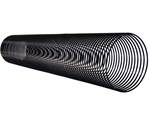













.jpg;maxWidth=300;quality=90)











